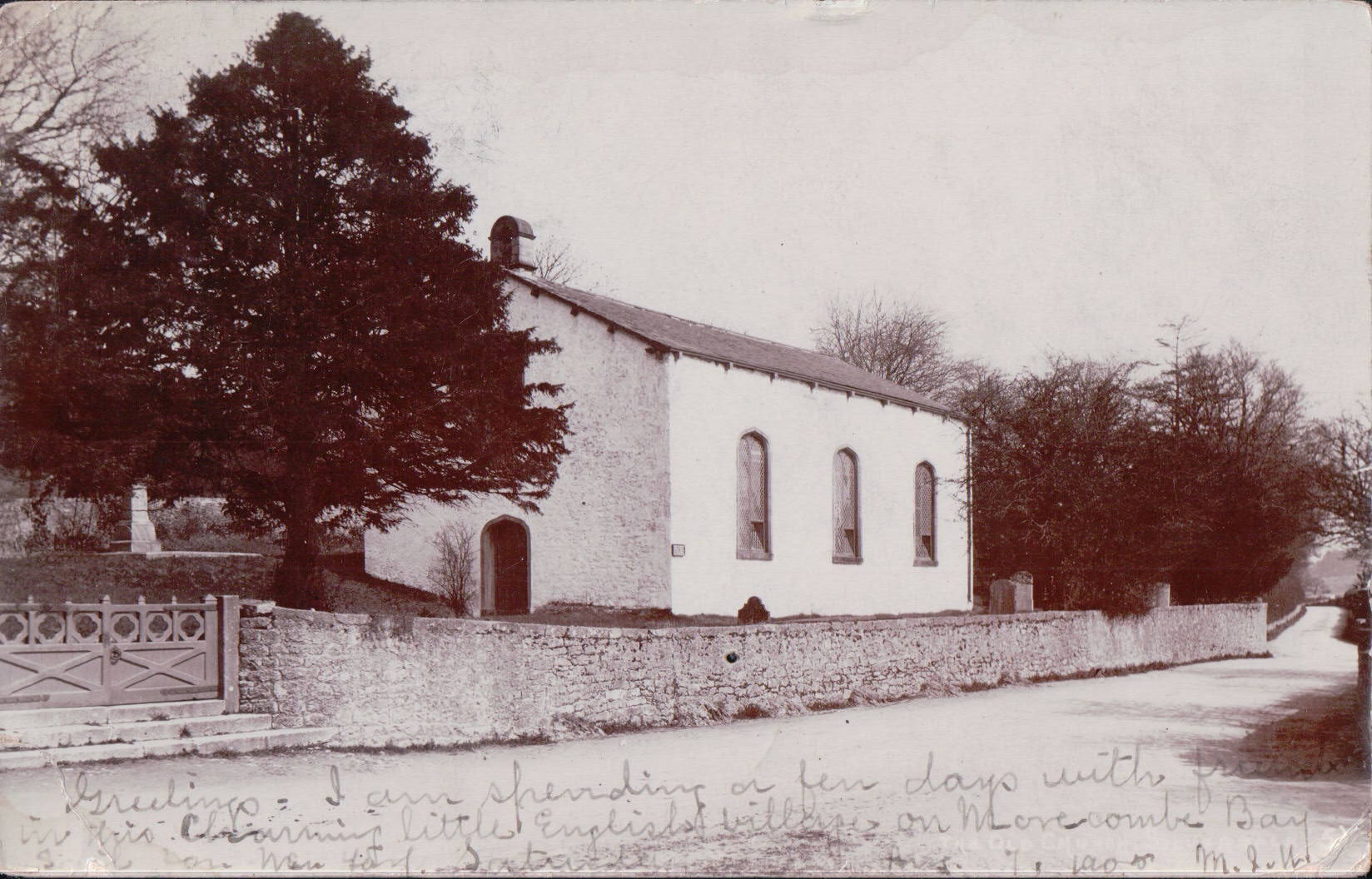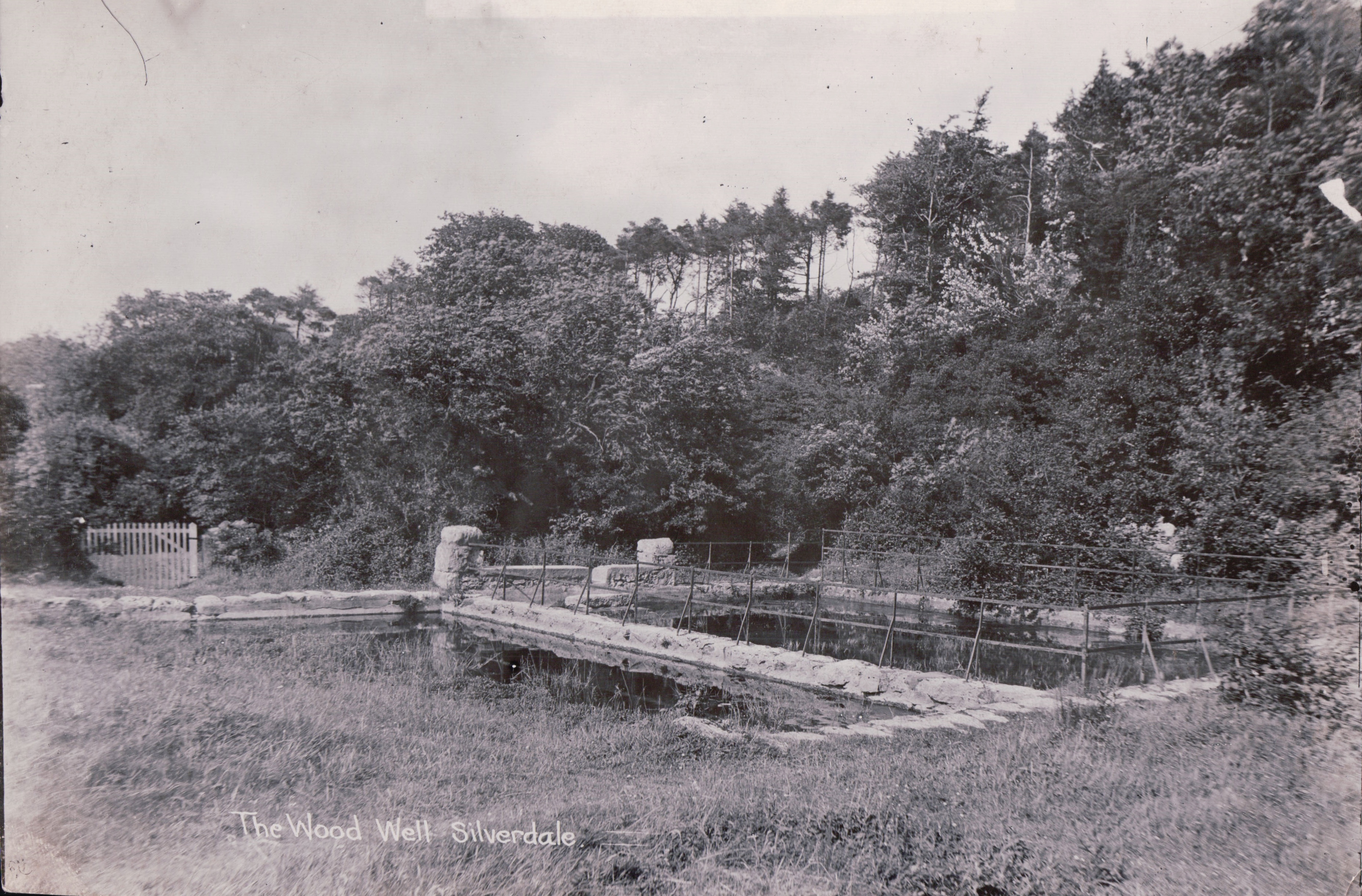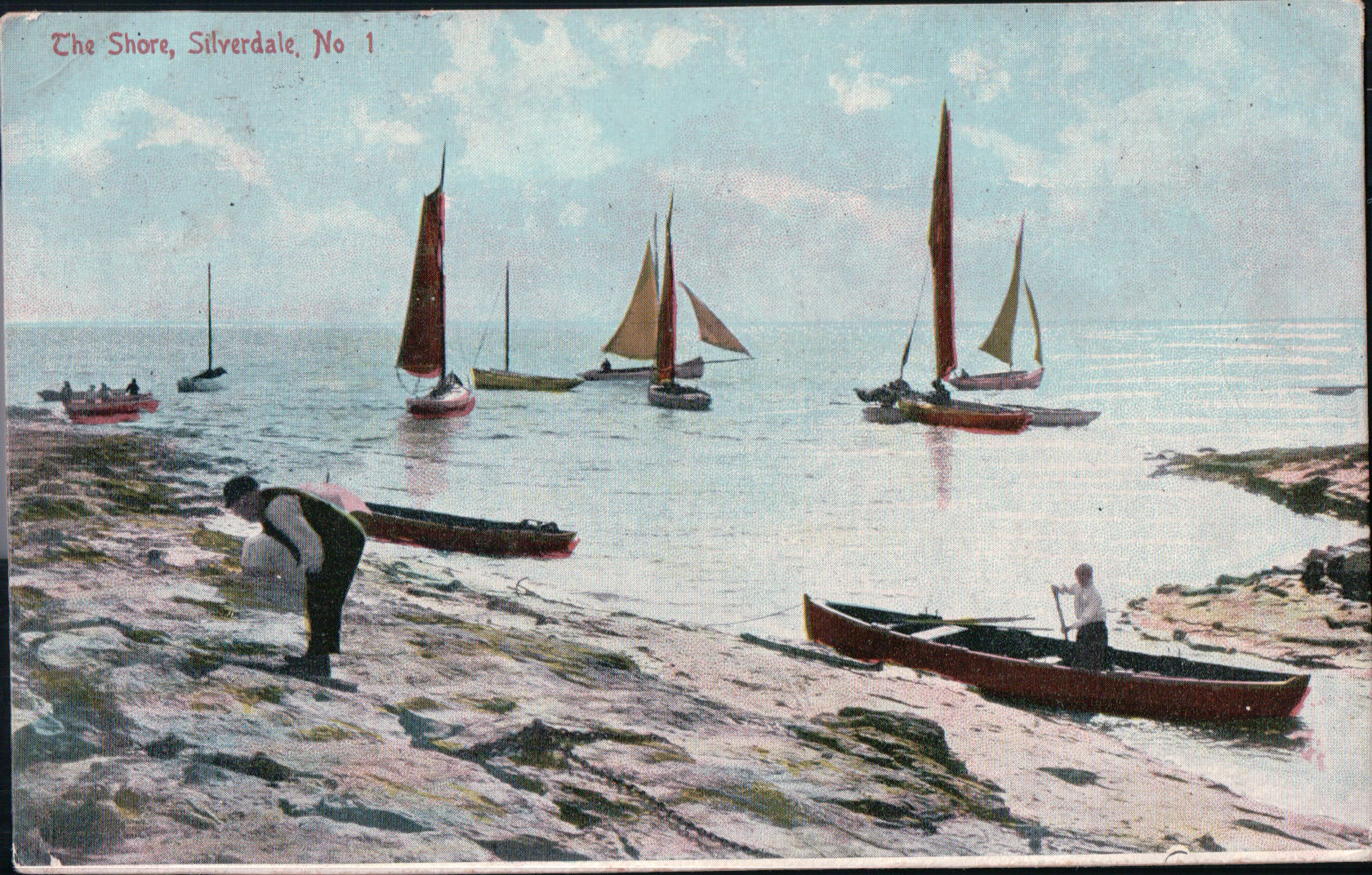Silverdale
![]()
![]()
Silverdale
Prior to the arrival of the railway – the Ulverston to Lancaster line in 1857 – Silverdale was a small collection of semi-isolated farmsteads, lacking even a discernible village centre. Its population in early censuses (1821 to 1851) was around 240, and its economy was largely agrarian, with farms centred on the relatively few pockets of workable soil found upon the underlying limestone. But even before the advent of a local railway station Silverdale was referred to as “much frequented by visitors and tourists, for whose accommodation there is a good inn” (Mannex Directory of 1851). After the arrival of the railway, the population grew steadily to reach 1519 (2011 census).
The origin of its name is lost – but almost certainly has nothing to do with the silver colour of its birch and hazel woods, or its limestone outcrops. Selredal is its earliest recorded name (1199), and may derive from a Norse name, Soelvers.
At the time of the Norman Conquest it is thought that Silverdale was part of an estate administered from Beetham and held by Tostig Godwinson, Earl of Northumberland, and brother of King Harold. This estate included Yealand, Silverdale, Borwick, Farleton, Preston Richard, Heversham, Hincaster and Levens. In 1092, following his successful putting down of a rebellion in Durham, Roger of Poitou, a Norman, was granted extensive lands in the north-west and elsewhere, including Beetham. Later Silverdale was part of the Barony of Kendal, and by the sixteenth century was recognised as a manor in its own right.
Churches
 Silverdale Chapel, built 1829
Silverdale Chapel, built 1829
Before the Reformation there was a chapel at Silverdale described as a chantry which probably ceased to be used regularly after the Reformation. During the Commonwealth period the 'poor inhabitants (were) forced to hire a poor minister for 20 nobles per annum,' but a stipend of £40 was afterwards assigned to the minister, Samuel Harrison, out of the rectory of Warton. This grant would cease at the Restoration, but in 1680 the chapel was built on the old foundations, and soon afterwards a curate seems to have been appointed. A stipend of £3 3s. 4d. was given by the vicar and others for reading prayers every Sunday afternoon, and soon afterwards the Dean and chapter of Worcester, on increasing the vicar's stipend, required £5 to be given to maintain some kind of service at Silverdale 'to keep out dissenters from entering upon the said chapel.' The vicar seems to have grudged this payment to a curate, and preached there himself once a month. In 1738 Silverdale was 'supplied by a curate; sermon and prayer there once a month.' Later an endowment was secured, and from 1756 there seem to have been regular ministrations. The chapel was rebuilt in 1829. A separate district was assigned to it in 1871. The present church of St. John was built in 1886, the old one being used as a mortuary chapel (now a private residence).
The earliest Methodist services in the area were held at Arnside Tower Farm from the 1830’s. In 1873 a Bolton cotton spinner, John Hebden, came to Hill House (now the Woodlands Hotel), and made available one of his outbuildings for Methodist services. This became too small for the congregation it had attracted, and Hebden provided a field as the site for a new chapel, which was built and consecrated in 1879.
Water and Sanitation

Woodwell
Silverdale’s water was traditionally supplied from rain collected from roofs, stored in tanks and cisterns, or from the numerous wells and springs arising from the limestone geology. It wasn’t until 1938 that a piped supply to the village was arranged by the Lune Valley Water Board, and the Haweswater-Manchester aqueduct was tapped for this purpose.
Silverdale’s geology has largely defeated the construction of a drainage system, and sewage is disposed of through septic tanks or cesspits. Lack of drainage has imposed a natural limit on the size of the village, preventing much expansion.
The Coming of the Railway
The iron industry in Furness was the main motivation for the development of the railway in our area. From the south, the railway had reached Lancaster in 1840, and by 1846 the Lancaster to Carlisle line was constructed. In 1857 the line from Lancaster to Ulverston, via Carnforth, was built. There was local controversy in Silverdale over the route to be taken: the easiest route would have been to continue to follow the coastline for the stretch from Carnforth to Arnside, but prominent Silverdale landowners were keen to protect their interests, and the alternative route was adopted – albeit by-passing the village centre by over half a mile.
The railway opened up new business opportunities – to transport limestone from Silverdale’s quarries, fish from the small local fishing industry (mainly cockles and shrimps), and to bring in tourists and private individuals with the money to invest in the larger villa-style houses dotted around the village.
Boundaries
 Shore at Silverdale - Lindeth
Shore at Silverdale - Lindeth
A peculiar feature of geography was the separation of Silverdale from Lindeth, the latter township was part of Warton-with-Lindeth until local government boundaries were changed on April 1st 1935. Prior to this date the boundary between Lindeth and Silverdale ran somewhat arbitrarily (from an inhabitant’s point of view, at least!) from the shore, behind the Silverdale Hotel (built as the Britannia), to the gate leading to the Lots, along the south side of Stankelt Road, and crossing the road where it becomes Slackwood Lane.
Area of Outstanding Natural Beauty
The Arnside Silverdale AONB was designated in 1972, giving statutory protection to conserve and enhance the area of high scenic beauty. At just 29 square miles it is one of the smaller AONBs. The rare habitats and scenery provided by extensive limestone pavements and the Morecambe Bay means the beauty of nature is all around us in Silverdale.
